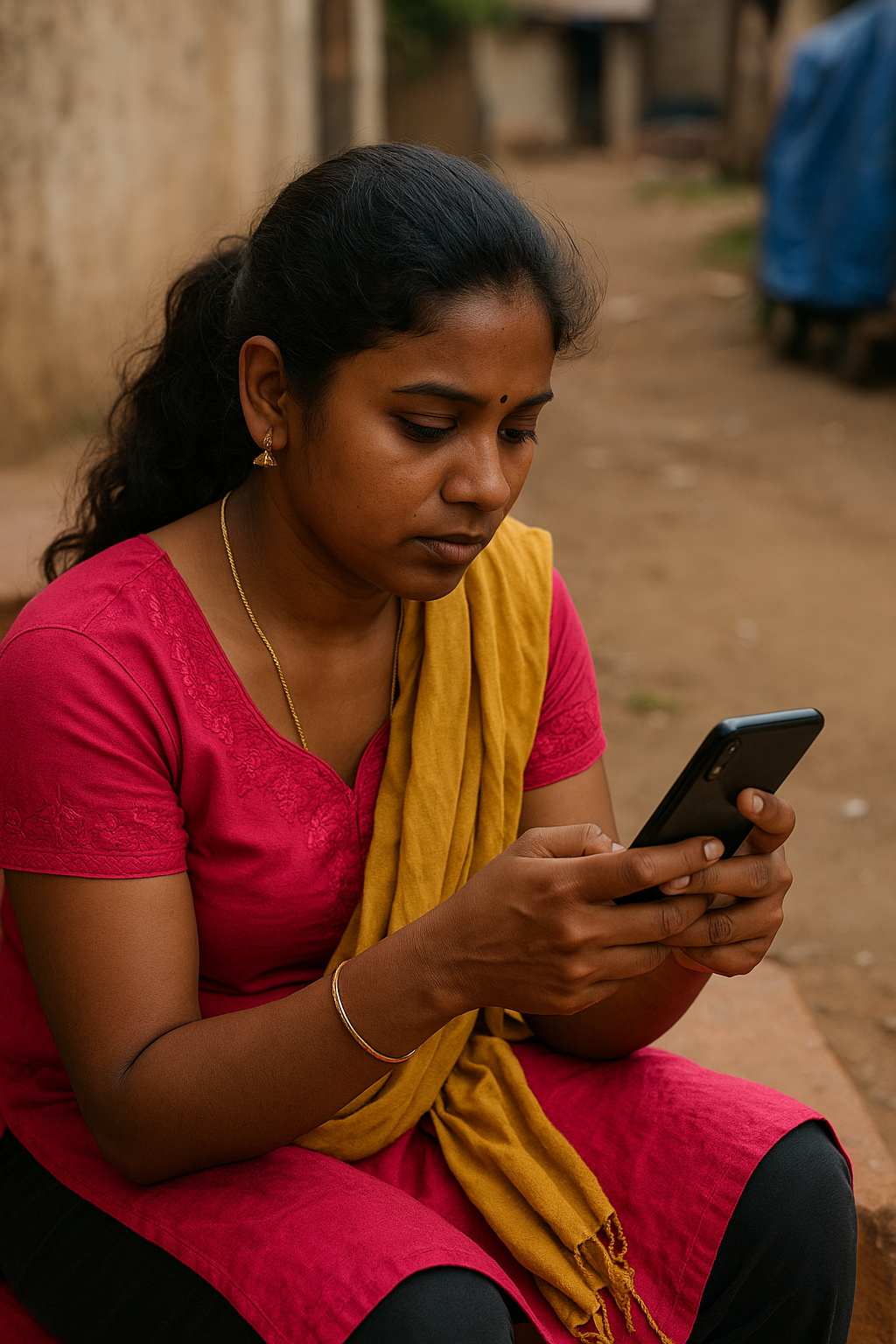Global South users harness digital platforms for aspiration and collective safety
The study challenges the dominant narrative of “algorithms of oppression,” which describes how search engines and platform algorithms perpetuate inequalities by privileging dominant cultural norms and marginalizing disadvantaged communities. While acknowledging the validity of such critiques, they warn that this framework risks portraying users in the Global South as passive victims of data colonialism and platform capitalism.

A new commentary by Payal Arora and Guanqin He of Utrecht University challenges the prevailing narrative that digital platforms in the Global South primarily exploit marginalized communities. Their work, titled “Geography of Digital Hope: An Optimistic Perspective on Digital Labor and Infrastructure from the Global South” and published in Big Data & Society, argues for a fundamental rethink of how scholars and policymakers view digital infrastructures. Rather than seeing these technologies solely as tools of extraction and oppression, the study highlights how they also serve as contested spaces where aspiration, solidarity, and collective care emerge alongside precarity.
The authors contend that the widespread pessimistic framing of digital platforms often overlooks the creativity and resilience of those who rely on them for survival and advancement. By focusing on the lived practices of workers, migrants, and activists in the Global South, the commentary makes the case for reframing digital infrastructures as “geographies of digital hope.” This lens shifts attention from deterministic critiques of technology to the complex ways that marginalized users navigate and reshape digital spaces to build livelihoods and communities.
Rethinking algorithms: From oppression to aspiration
The study challenges the dominant narrative of “algorithms of oppression,” which describes how search engines and platform algorithms perpetuate inequalities by privileging dominant cultural norms and marginalizing disadvantaged communities. While acknowledging the validity of such critiques, they warn that this framework risks portraying users in the Global South as passive victims of data colonialism and platform capitalism.
The commentary introduces the concept of “algorithms of aspiration,” which recognizes how communities in low- and middle-income countries actively repurpose algorithmic tools to gain visibility, earn livelihoods, and express creativity. This perspective underscores that data and algorithms are not merely instruments of control but can also be reimagined and negotiated by users to shape alternative digital futures.
The researchers cite the case of Kuaishou, a popular short-video platform in China that prioritizes “authentic rural life” in its algorithmic recommendations. By amplifying rural and migrant voices, the platform has enabled a new “unlikely creative class” of small-scale entrepreneurs and grassroots content creators. Many of these users, often migrant youth, use algorithmic visibility to build small businesses in e-commerce and micro-entrepreneurship, leveraging their creativity to seek economic advancement outside traditional industrial jobs.
However, the authors stress that these opportunities are not free of contradictions. As shown in Lin Zhang’s (2023) concept of the “labor of reinvention,” creators often endure grueling cycles of self-branding, content production, and adaptation to shifting platform logics. The promise of aspiration is thus intertwined with precarity, demanding constant labor and often relying on unpaid contributions from family members.
Surveillance as a tool for care and collective safety
The commentary reframes surveillance, typically seen in Western scholarship as an oppressive force under “surveillance capitalism.” The authors argue that in many Global South contexts, surveillance also serves as a means of mutual care, safety, and solidarity, especially for marginalized and precarious workers.
This concept of “surveillance of care” highlights how communities repurpose tracking and monitoring technologies for collective support. For example, women working in the gig economy, such as ride-hailing drivers in China and India, have formed women-only online groups to exchange safety tips, share experiences, and respond to gender-based harassment. In similar ways, Filipino migrant workers use TikTok not just for leisure but as a platform to document abuses and build transnational networks of solidarity. In Jakarta, gig drivers organize through hundreds of WhatsApp groups, creating what researcher Rida Qadri (2023) describes as “distributed solidarity” to mitigate the isolation of platform work.
The study notes that this care-oriented surveillance is far from an unambiguous good. It often shifts the burden of security and protection from institutions to vulnerable communities themselves. Drawing on Julian Posada’s (2022) work on Latin American platform workers, they note that these trust-based networks of “embedded reproduction” provide vital safety nets but also reinforce existing inequalities, particularly gendered divisions of labor. This duality reflects the broader argument of the commentary: that hope and precarity coexist and are often co-produced in digital spaces.
Beyond binary narratives: Rethinking digital infrastructures
The authors argue that the prevailing binary of exploitation versus empowerment is too simplistic to capture the realities of digital life in the Global South. They call for a more nuanced approach that recognizes digital infrastructures as social–techno ecologies, dynamic systems shaped not just by platform architectures but also by cultural norms, local practices, and users’ aspirations.
This reframing centers the agency of communities often described as being “at the bottom of the data pyramid” (Arora, 2016). By focusing on these lived experiences, the commentary challenges Western-centric “data universalism” that treats the Global South as a monolithic victim of Big Tech. It also counters deterministic pessimism with what Arora describes as “agency-based optimism,” an outlook rooted in the practical necessity of marginalized communities to find hope in order to sustain themselves and carve out better futures.
Importantly, the study does not present these geographies of digital hope as utopian. Aspirations, the authors note, often come at the cost of grueling labor, and solidarities can be fragile or even reinforce existing hierarchies. Yet by highlighting these contradictions, the commentary demonstrates that digital infrastructures are not merely sites of domination; they are contested terrains where marginalized users actively negotiate their agency.
- FIRST PUBLISHED IN:
- Devdiscourse










